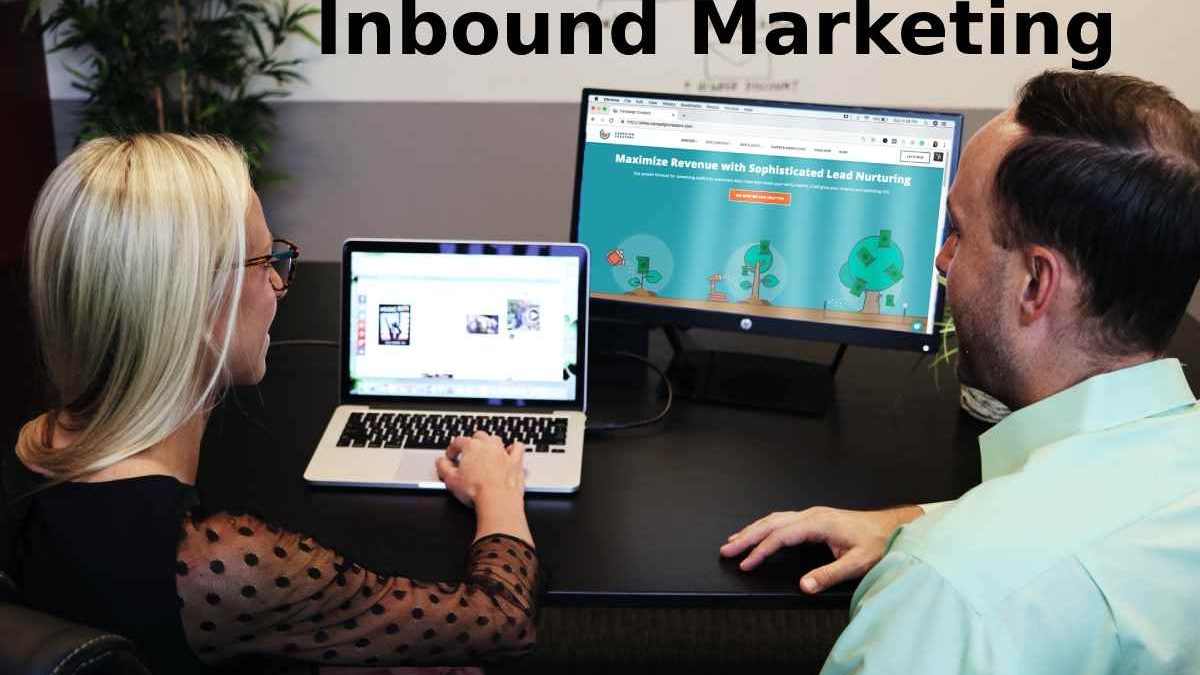Inbound Marketing – Want to get started in inbound marketing but don’t know where to start? Follow the leader! This article will see the essential definitions of inbound marketing and how to succeed in your strategy step by step.
Inbound marketing allows you to position yourself and make your brand known as an expert in your sector. It is a prospect to stand out from your competitors by establishing a relationship of trust with your customers and prospects!
Table of Contents
In this guide, you will see everything about:
- The definition and specificities of inbound marketing
- How to set up a content strategy
- What tools support your content strategy
- How to integrate inbound marketing with sales and customer service
- An introduction to inbound marketing
The Founding Principles of Inbound Marketing
Formerly starting, it is helpful to understand the essence of inbound marketing and its difference with the traditional approach known as “outbound”.
What is the difference between Inbound Marketing and Outbound Marketing?
In traditional marketing, we often try to reach a prospect that interests us to offer them sales pitches through different channels, usually paying: billboards, TV spots, sponsored ads, etc.
It was also the case for a long time with mailing, which consists of sending commercial information in bulk. From now on, the need to collect explicit consent of recipients brings this channel closer to an inbound approach.
We seek to attract the prospect by creating content likely to interest him in inbound marketing. As the chance consumes the content produced by the brand, he will be more likely to purchase without the intervention of paid advertising or ask himself to be canvassed to his own free will. Therefore, an inbound marketing strategy is based on two key elements: content with high added value and conversion opportunities.
Often, these opportunities are a form to fill out to receive content with restricted access after generating interest with free content. This way, we can send them emails with even more content until they approach directly.
The Inbound Marketing approach often has positive repercussions beyond the marketing teams alone:
- The content created can be used as sales support by sales teams
- Customer service will be less solicited thanks to your content that meets users’ needs and helps them better understand your offers.
An example of Inbound Marketing
Like all our blog posts, the guide you are reading is part of our inbound marketing strategy!
We sell emailing and marketing automation solutions. However, an excellent inbound marketing strategy based on lead nurturing scenarios requires an email marketing & marketing automation solution.
Therefore, people who want to implement an inbound marketing strategy are potential customers. Therefore, by publishing this guide, we seek to reach – and help! – people interested in inbound marketing make them aware of our brand and solution.
Inbound Marketing in 5 key Steps
Have you understood the principle of inbound marketing? Enough theory, time for practice. Here are the 5 essential steps to starting implementing your inbound marketing strategy!
Understand your target
Define your personas
And also, you can target multiple personas with your content. However, it recommends limiting yourself to a limited number of personas, especially when you are just starting in inbound marketing, so as not to spread yourself too thin. To help you define your personas, we have unearthed four models that you need to adapt to your activity:
Identify the phases of the buying journey
In digital marketing, the path to purchase or sales funnel represents the path taken by a customer between his first interaction with your company and the purchase of your products. Once your personae profile has established, you need to understand what leads them to purchase to best support them as part of your inbound marketing strategy.
At a minimum, we can distinguish 4 phases in the buying journey of your prospects:
- Visitor: these are the people who visit your content
- Contact (lead): people who have appreciated your content enough to leave you their contact details (subscription to the newsletter, download a white paper, etc.)
- Customer: people who made a purchase
- Ambassador: people who promote your brand and relay your content
It’s up to you to develop and specify this purchasing path and model your business’s sales funnel! It varies greatly depending on your sector of activity, your types of customers, etc.
Start by evaluating the length of this buying journey:
- Short and without contacting a salesperson (e-commerce, B2C)?
- Long with the intervention of a sales team (SaaS, B2B)?
A customer will take a few hours to choose a dress, a few days to buy a washing machine and several months to invest in a SaaS solution. You must take this into account in your content strategy!
Identify the research path
Before becoming your customer, any prospect goes through the three phases of a research process that will enable him to find a solution adapted to his needs.
However,, to be found and read by qualified people (i.e. whose needs correspond to your services or products), your content must therefore relate to one of these stages.
Here are the 3 phases of the research journey:
- Realization: The prospect begins to realize that he has a problem. The content helps him identify the problem.
- Consideration: The prospect has identified their problem and is beginning to think about possible solutions. The content helps them compare different solutions.
- Decision: Once the problem has been identified and the solutions compared, the prospect will choose the correct answer. And also, the content helps determine who will implement the solution (you!).
Moreover, ensure to balance the amount of content in the three phases: often, we mistake writing too much for the “Decision” phase, which is more advertising. On the contrary, the stage should be the least represented.
Create content adapted to your target
Also, Create content that meets your audience’s needs and gets it read by your potential customers.
Create content adapted to a research path
To be an effective driver of your acquisition, your content strategy must revolve around the different stages of your customers’ search journey.
To get organized easily, create a table like this:
Persona 1 Personas 2
Awareness Section 1 Section 1
Section 2 Section 2
Section 3 Section 3
Consideration Section 1 Section 1
Section 2 Section 2
Section 3 Section 3
Decision Section 1 Section 1
Section 2 Section 2
Section 3 Section 3
When you create this content, you offer a solution to the problems of your personas problems at all stages of their thought journey. Therefore, this content is used to establish your credibility and lead visitors to your restricted access content.
In terms of format, some prefer to bet everything on video, others on a podcast, but the most classic content format remains the blog. Therefore, it’s engaging and easy to set up: with a few rare exceptions, and it’s best to start there.
What content to create?
Here are seven types of articles you can experiment with to attract readers:
- The reference article on a subject: it must be exhaustive, demonstrate your expertise and be well optimized for SEO to be easily found
- The curation of good practices, for example, this one
- The “best of” article, like our monthly newsletter reviews
- Tutorials, like our guide to sending a newsletter
- The “buzz” article, to seek virality
- The controversial opinion piece: use in moderation, but boost engagement from time to time.
- The news article is not valid for long, but nothing like a peak in visibility over a few days.
Generate traffic on your content
For your content to reach its goal, optimize it for SEO and promote it on social networks!
Work on the referencing of your articles in search engines.
To start, work on the internal linking of your articles. You can use the 2-2 rule:
- two links from old articles to your new article
- two links from your new article, to old articles
In this way, you develop the internal mesh of your blog. That is how Wikipedia makes sure always to be the first result of your searches: thanks to its vast network of internal links!
Also, try to attract inbound links, links from other sites. You can create content in partnership with companies or influencers to get inbound links more easily: people like to share what highlights them.
Finally, do not forget to share your articles on social networks to build loyal readers gradually!
Collect contacts (lead generation)
Set up data collection systems to transform your visitors into contacts that you can then nurture and qualify.
Set up a subscription form for your emails
However, Integrate a registration form into your newsletter or promotional offers on your blog or website. In this way, all visitors to your content will have the opportunity to subscribe to your emailing lists.

